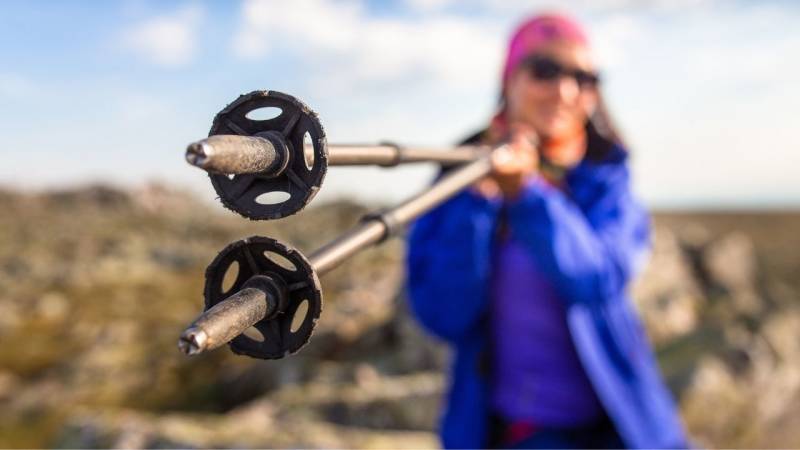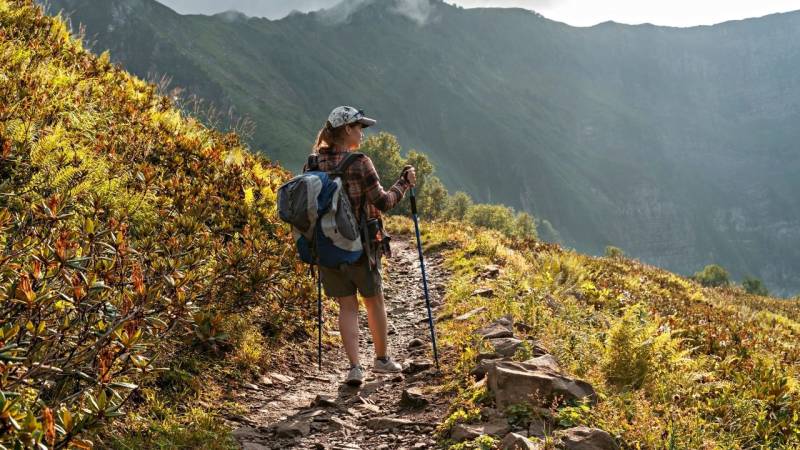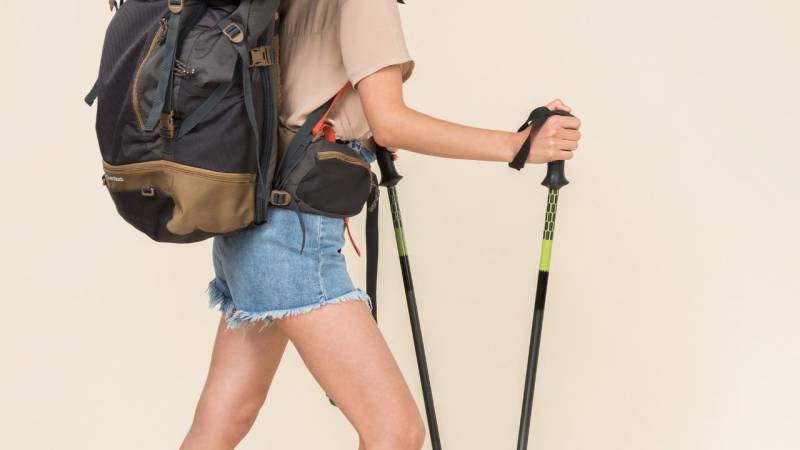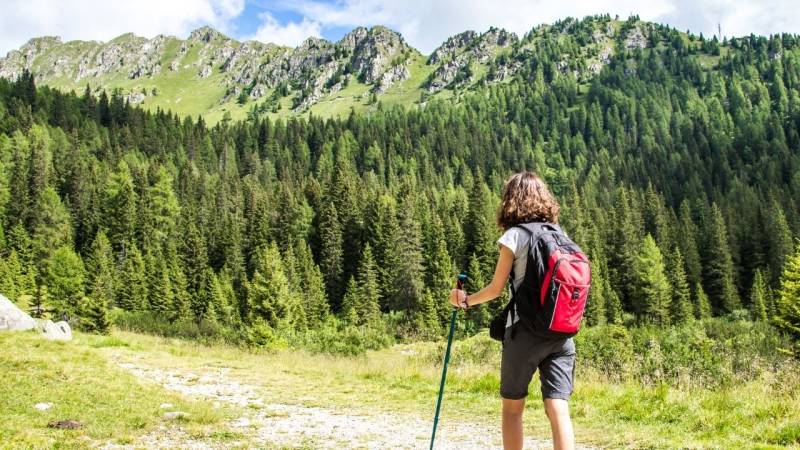
Why you should use trekking poles?
👉 The key facts from this guide
- Walking sticks reduce the risk of injury and relieve your legs and joints
- There are fixed and adjustable trekking poles - choose the appropriate length for your height
- Wrist straps make hiking easier and help transfer weight to the pole
- Plates on the poles prevent sinking into soft terrain - different types for mud, snow, and powder snow
- Choose the right tip for the terrain - rubber tip for hard surfaces, hard tip for trails, snow, and ice
- Walk naturally and in rhythm with the poles to ensure stability and safety
Does your hike often end with shaky legs?
Then trekking poles can help you go the extra mile.
Sticks can reduce your risk of injury and ensure safety.
Here you will find everything you need to know about one of the most useful pieces of equipment in your hiking arsenal.
Knowing when the right time has come
If you feel secure on flat ground, you don't necessarily need a stick.
But a hiking stick can always help you when you're going uphill or downhill or moving on uneven terrain. You may not notice the benefits immediately, but your joints will thank you.

If you use hiking sticks, 20% of your weight is distributed from your legs to your arms. This means that your legs are less burdened with each step. This also means that your feet are somewhat protected and blisters do not form as quickly.
The sticks also provide stability when crossing rivers and can also be used as a massage tool for tense calves.
But sticks are not always helpful. Especially when climbing on rocks, you should store them in your backpack.
Find your height
There are two types of hiking sticks: fixed and adjustable.
Firm hiking sticks are generally a bit lighter and simpler (and usually also cheaper). Sticks with a fixed length are best suited if you have limited funds and do not intend to hike long, steep uphill or downhill trails where adjustability is advantageous.
If you hold the fixed trekking pole on level ground, your upper and lower arm should form an angle of approximately 90 degrees. When using a fixed trekking pole, you should choose a pole that best fits your height. In general, the tip of the pole should be positioned 15 to 20 centimeters above the elbow when standing upright.

Adjustable sticks should be adjusted so that your elbow forms a 90-degree angle when holding the stick while hiking on flat sections.
You are hiking uphill for a long time? Shorten your stick by 5 to 10 centimeters. This length should provide more stability and support without straining your shoulders. You are hiking downhill for a long time? Extend your stick by 5 to 10 centimeters to improve your balance.
Wrist straps make hiking easier for you
If you use the wrist strap on your poles incorrectly, you will have to exert more effort than necessary. If there are indications on your poles for left and right (check the straps for clues), first make sure you are using the correct pole for your hand.

Leave the wrist strap hanging and slide your hand through the hand loop and grip the handle. Then place your thumb over the loop attachment on the stick. This way you can transfer your weight onto the stick.
Choose your plate
The trekking pole has detachable plastic discs over the tips, called baskets, which can prevent the pole from sinking too deep into soft terrain. In general, the larger the basket, the better. Here are some of the different types of baskets that you can attach to your trekking pole:
Mud Plates: Muddy hikes without the support of these baskets mean that you have to work harder because your trekking poles sink deeper into the soft ground.
Snow Plates: Snow plates are wider than mud plates and provide the same stability to your sticks as snowshoes.
Powder Snow Plates: They are wider than snow plates and are suitable for very fluffy snow. If you are moving in terrain with skis or snowshoes, you probably need deep snow plates.

Reading tip: How to hike in the snow and make progress safely
Know your tip
Most trekking poles come with interchangeable tips or plates that are suitable for different types of terrain. Here are just a few of them:
Rubber tip: This tip is designed for hard surfaces such as asphalt or bare rock and can be placed over the hard tip to prevent damage to the stick and the ground.
Hard tips: These tips are made of metal or carbide. They provide traction on trails, snow, and ice. Occasionally, this material is harder than stone, so be careful not to damage anything when using these tips.
Stay in motion
If you hike with sticks, walk naturally. You will fall into a regular rhythm, where you place the stick with every step.
If your left leg takes a step, your right stick should touch the ground, and if your right leg takes a step, your left stick should touch the ground.
If you fall out of this rhythm, simply lift the sticks a few steps to readjust.
In steep terrain, it can be helpful to place both sticks at the same time to ensure stability.
The sticks can also be used to make your way through overgrown terrain when hiking, or to test the depth of water or snow.


Author of the guide
Martin Gebhardt
Hey, I'm Martin. On my blog, you will learn the basics and numerous details about living in the wild. I think survival, bushcraft and the good life in nature are the keys to happiness. Find me here on Instagram or on YouTube. You can find more about my mission on the About Me page.
Was this guide helpful?
4 people found this guide helpful.
5.00 out of 5 points (4 Ratings)
Comments (0)
This post may contain affiliate links. So if you click on the links and make a purchase, I will receive a small commission at no additional cost to you. Click here, to learn more about it.


